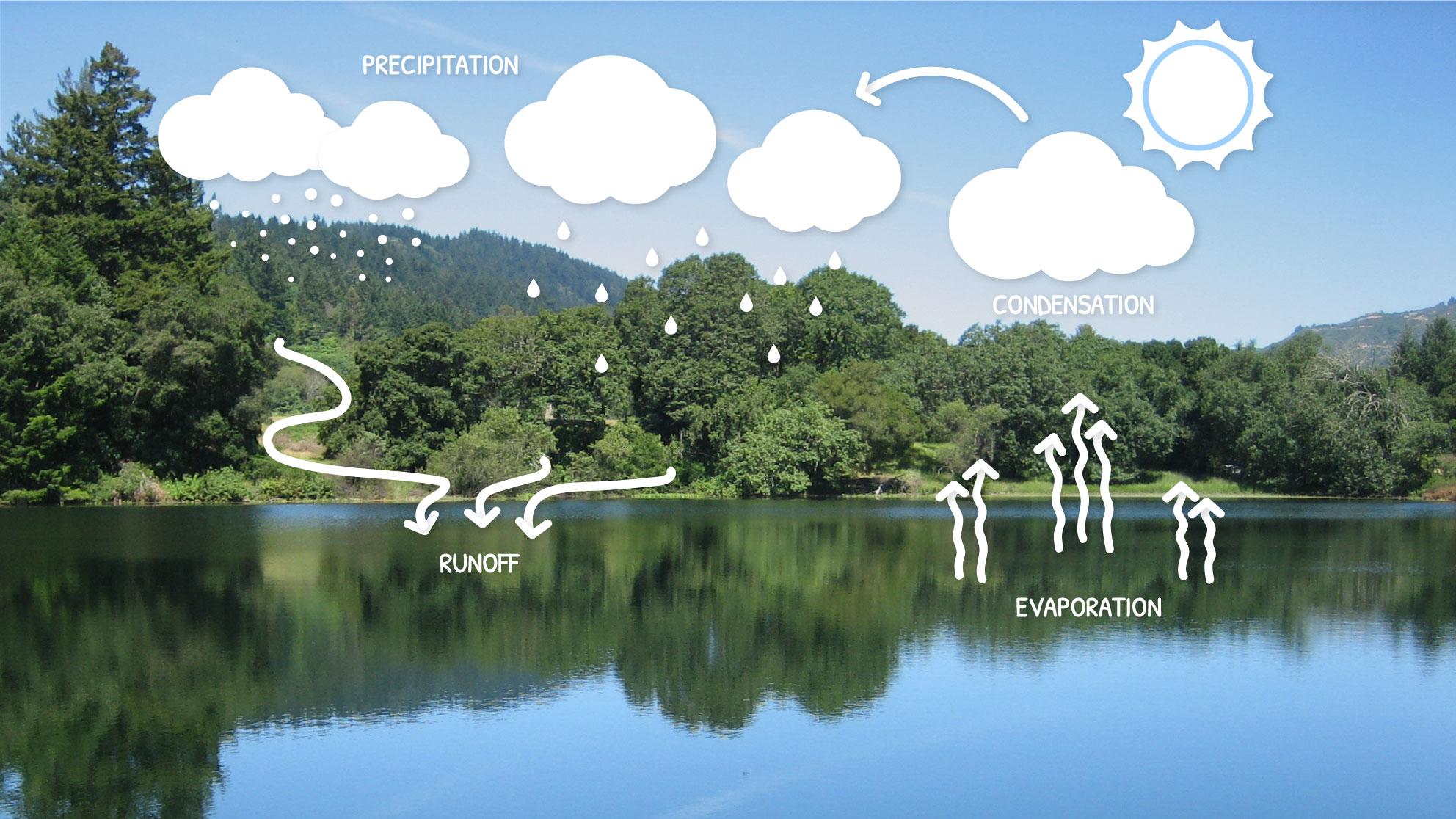Climate change isn’t exactly a new subject, but there’s a lot that we’re still learning about it, such as how it works, what its effects will be, and when we’ll see those changes take place. In the water utility industry, climate change is changing our assumptions about the availability and quality of our water supply and how to manage this precious resource. San Jose Water is dedicated to providing over 1 million residents with high quality, life sustaining water, and as climate change continues to progress, we’re staying tuned-in and ensuring that we prepare for a variety of future water supply scenarios.
One of the major impacts that climate change has on our water resources is how much it has altered the hydrologic cycle - also known as the “water cycle” - which involves the movement of water through different forms (liquid, vapor, solid) and different areas of the earth (in the atmosphere, in bodies of water, and in the ground). Rising average global temperatures mean melting ice caps, less snowpack, and other changes to the water cycle. Perhaps the most visible change for humans, climate change has altered the amount, timing, and form of precipitation, especially here on the West Coast as we’ve dealt with higher risks of drought and more extreme bursts of rainfall over the past several years.
The relationship between water and climate is significant. This is especially true for California’s mountains whose watersheds provide us with freshwater. Warmer environments mean more rain rather than snow. While this may seem like a good thing, too much rain at one time puts a strain on our reservoir capacity, and less snowpack means less natural storage for our water during the rest of year. Rising temperatures have also begun to alter the timing and volume of streamflow in rivers, subsequently altering the behavior of aquatic life.
Dr. Daniel Swain of UCLA calls one impact of climate change, “Precipitation Whiplash” - in which a rapid transition of very dry conditions to wet ones can cause serious destruction to California’s inhabitants and its infrastructure. Transitions between long droughts and severe wet seasons have increased wildfire risk and weakened soil. This makes crops difficult to grow and increases the potential for a large amount of runoff, which can increase the amount of sediment, pollutants, and waste in our water supplies. In 2017, severe storms were to blame for around $1.5 billion in flood-related damage and subsequent repairs in California alone.
We now have a much better sense for the effects that climate change will have on our water supply than we did just a couple of years ago. SJW is staying up-to-date on climate science and planning for any potential climate impacts to protect our water quality and the health and safety of our customers. Last month, we opened our new Montevina Water Facility, which will help us better manage water supplies resulting from big winter storms in the Santa Cruz Mountains , and continue to deliver high-quality water to thousands of residents. We’re planning ahead to ensure the security and health of this precious natural resource, whatever the future holds.
You can get involved too, by being conscious about conserving water and making small changes in your daily routine to reduce climate impacts.
Some examples of what you can do:
-
Be more energy efficient by turning off lights when not using them
-
Trim waste by turning off the tap when brushing your teeth
-
Reduce your carbon footprint by taking the bus or carpooling for your daily commute or errands.
Each of these minor changes can play a major role in slowing climate change and can make a significant impact on our community’s health and water security.
